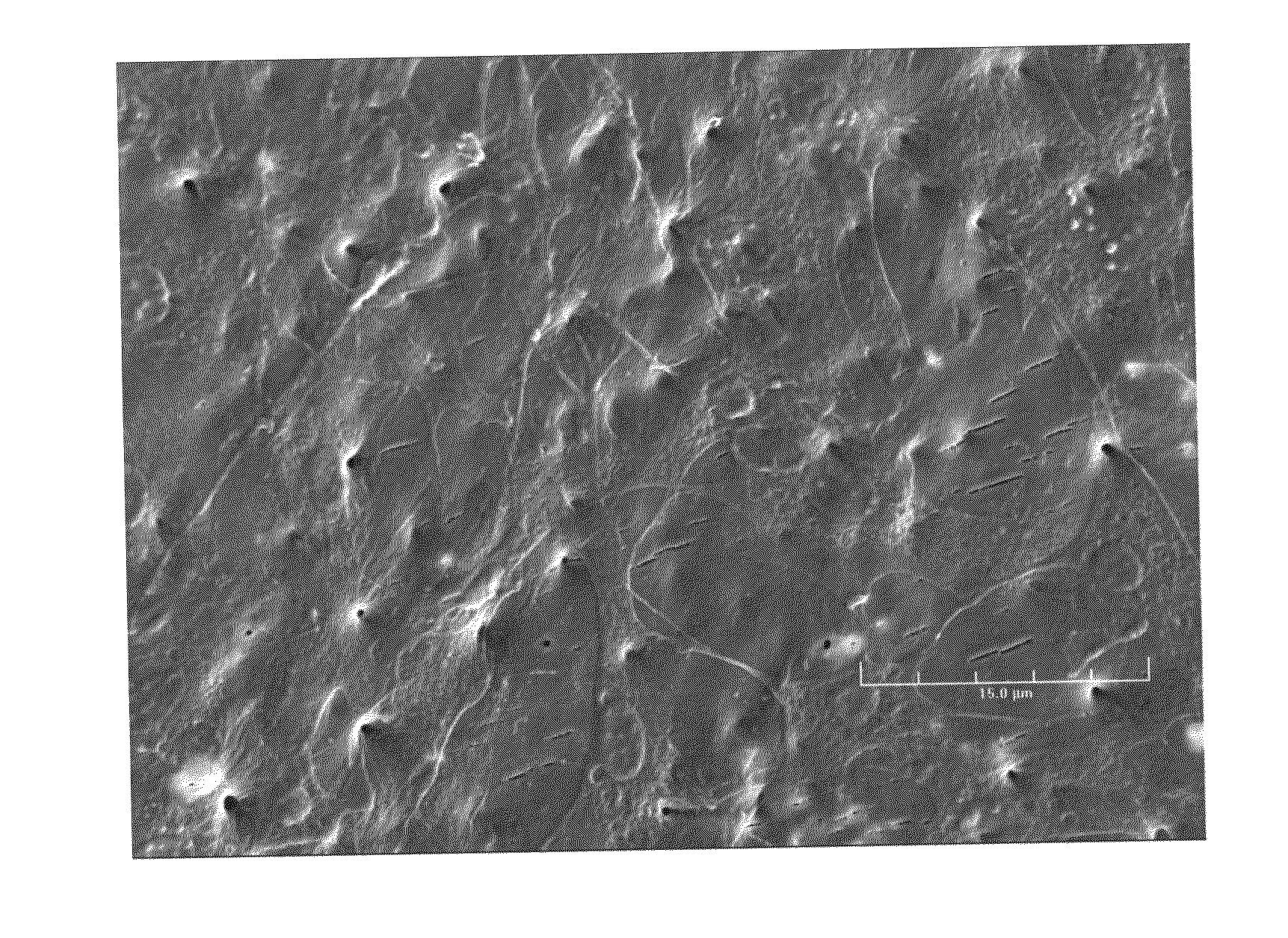Carbon nanotube composite scaffolds for bone tissue engineering
a carbon nanotube and composite scaffold technology, applied in the direction of prosthesis, manufacturing tools, peptide/protein ingredients, etc., to achieve the effect of sufficient mechanical strength
- Summary
- Abstract
- Description
- Claims
- Application Information
AI Technical Summary
Benefits of technology
Problems solved by technology
Method used
Image
Examples
specific embodiments
[0035]Described herein is a biocompatible composite material comprising water dispersible carbon nanotubes and a biodegradable polymer. Water-dispersible carbon nanotubes are carbon nanotubes that form a uniform dispersion or homogeneous suspension when mixed with water. In contrast, non-water-dispersible carbon nanotubes sediment or settle after mixing in water. Also described is a scaffold material suitable for use in bone growth and regeneration, as well as methods of making these compositions.
[0036]Thus, one aspect of the invention is a biocompatible composite material comprising water dispersible carbon nanotubes and a biodegradable polymer. In one embodiment, the biocompatible composite material comprising water dispersible carbon nanotubes and a biodegradable polymer does not comprise calcium phosphate.
[0037]Biodegradable polymers, both natural and synthetic, are well known in the art and include, but are not limited to, polylactides, polyglycolides, polycaprolactones, polyan...
example 1
Water Dispersible Carbon Nanotubes (WDCNTs)
[0052]Carbon nanotubes (CNTs) were purchased from Cheap Tubes, Inc. (Vermont, USA). Various single and multi-wall functionalized carbon nanotubes were screened for their water dispersibility. 0.1% (wt / vol) of carbon nanotubes (functionalized or non-functionalized (so called “pristine”)) were mixed with water and subjected to sonication for 1 h at room temperature. The suspension was allowed to stand for 24 h to observe any nanotube settlement. As shown in FIG. 1, carbon nanotubes functionalized with —CONH2, poly ethylene glycol (PEG), —COOH and —OH groups exhibited good water-dispersibilty. In contrast, non-functionalized (pristine) carbon nanotubes and carbon nanotubes functionalized with —NH2 and —SH2 resulted in sedimentation.
example 2
PLGA-Water Dispersible Carbon Nanotube Composite 2D-Matrices
[0053]Composite matrices with water dispersible carbon nanotubes (WDCNTs) (nanotubes with amide, poly ethylene glycol, carboxyl and hydroxyl as functional groups) were fabricated. Two dimensional matrices were studied for biocompatibility and osteocompatibility. The preparation of biodegradable polymers in two dimensional films have been described elsewhere (Deng, et al., 2008, 2009). Here, water dispersible carbon nanotube composites with poly(85-lactide-co-15-glycolide) (PLGA) was fabricated into two-dimensional films. Various WDCNTs (1 wt %) were mixed with PLGA in acetone and sonicated for 2 h. Acetone was selected as a solvent because it could solubilize PLGA while also interacting with hydrophilic nanotubes through dipolar interactions. Uniformly mixed solutions were cast and allowed a slow evaporation at 4° C. The solutions were subjected to constant agitation to prevent nanotube agglomeration. Dried films were bored...
PUM
| Property | Measurement | Unit |
|---|---|---|
| Temperature | aaaaa | aaaaa |
| Fraction | aaaaa | aaaaa |
| Fraction | aaaaa | aaaaa |
Abstract
Description
Claims
Application Information
 Login to View More
Login to View More - R&D
- Intellectual Property
- Life Sciences
- Materials
- Tech Scout
- Unparalleled Data Quality
- Higher Quality Content
- 60% Fewer Hallucinations
Browse by: Latest US Patents, China's latest patents, Technical Efficacy Thesaurus, Application Domain, Technology Topic, Popular Technical Reports.
© 2025 PatSnap. All rights reserved.Legal|Privacy policy|Modern Slavery Act Transparency Statement|Sitemap|About US| Contact US: help@patsnap.com



